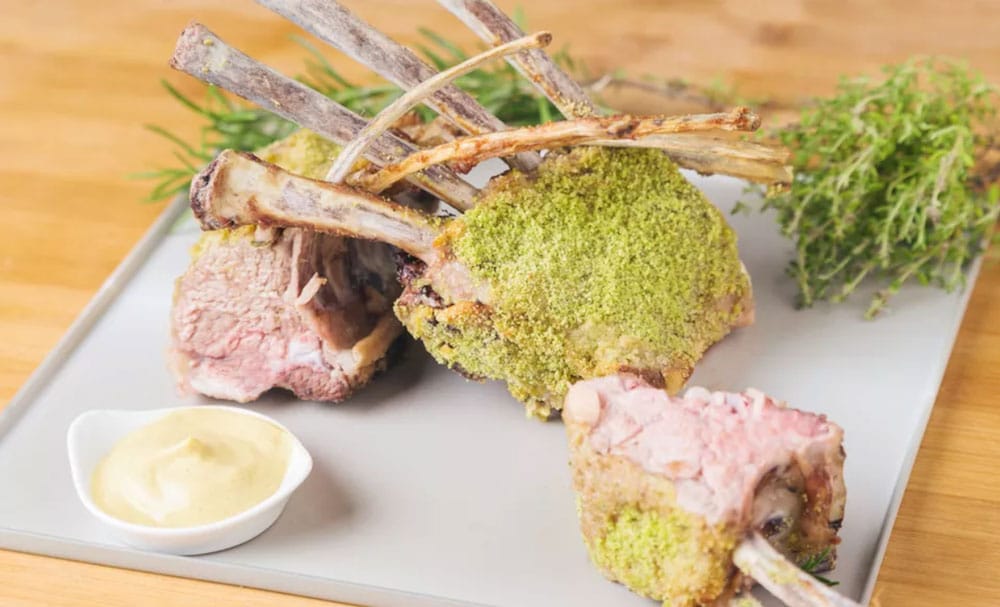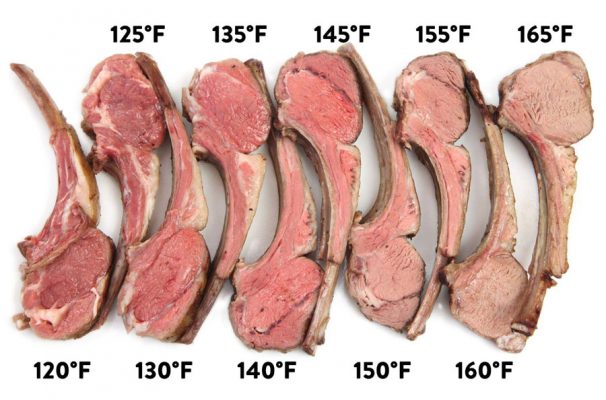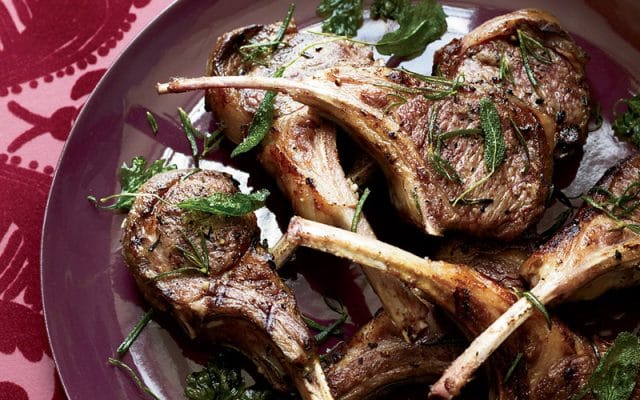The customer service team is always listening, taking notes, and quantifying complaints to ensure our products are continually improved. Due to selling directly to you, the customer, via Amazon, we can use product reviews to help us improve our existing products or help further development of new products.
Table of Contents
Roast rack of lamb is an elegant, classic British dish that is known for its tender melt in the mouth texture and beautiful presentation that is befitting for just about any celebration or special occasion. In fact, the right rack of lamb recipe will have your guests still savouring it well after the meal has ended.
For a classic rack of lamb recipe, along with the proper cooking techniques and internal temperature for tender, succulent lamb, simply adhere to the following guidelines for preparing your rack.
How to Choose Good Lamb Ribs?
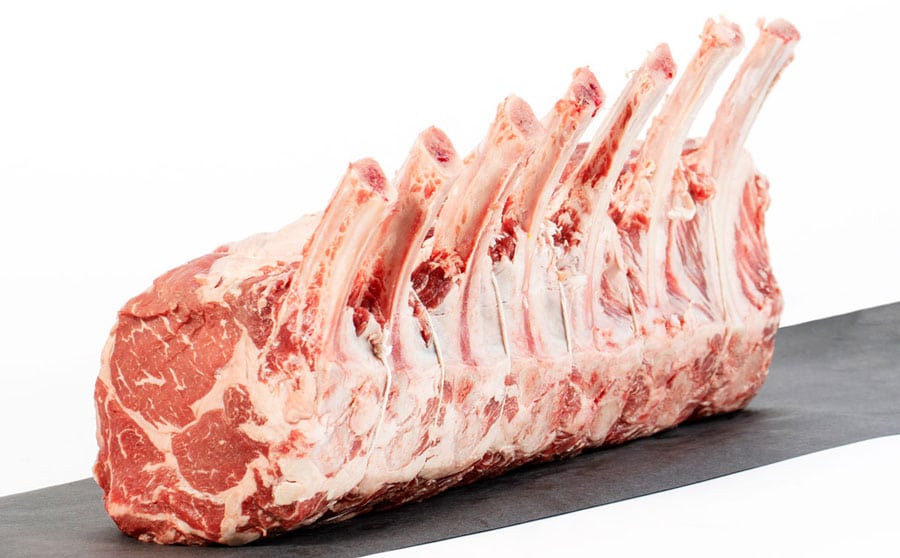
The first step to making the perfect roast rack of lamb is to choose quality lamb, which a good butcher can assist you with. Most butchers are passionate and very knowledgeable about different cuts of meat; therefore, they can offer expert advice when it comes to selecting your lamb. They can also provide advice on the most effective ways to prep the rack.
They also source only the best meat, which usually comes from surrounding farms or other trusted sources, for quality assurance. Furthermore, their meats are also stored in favourable conditions, which includes the proper circulation, and they also replenish their supply frequently to help ensure the freshest cuts.
As a rule of thumb, the lighter the colour of meat, the more tender. The bones should also be slightly pink in colour, and the fat should be a bit dry and crumbly.
Once you have selected your rack of lamb, simply ask your butcher to “French” it, which just simply means trim it so that the ribs show, which makes for an impressive presentation. However, request that the butcher leaves some of the tasty fat and meat near the outside of the ribs, or the ribeye, which will entice your guests to enjoy every last bit of the meat.
You could also simply select a whole untrimmed rack, be sure to have the chine bone removed, and then French it yourself.
If possible, you should also purchase the rack of lamb just a few days prior to cooking it for maximum freshness. In some cases, you can even contact the butcher to preorder the rack, which will help ensure they have exactly what you want in time for your dinner.
How to Roast a Perfect Rack of Lamb?
Rack of lamb is pretty simple to prepare, and it doesn’t take long to cook, depending on the size of your rack as well as the desired doneness. But if done properly, it will have your guests assuming it took all day.
Some Cooking Tips to Begin:
- Be sure to bring the meat to room temperature prior to cooking; otherwise, the exterior will cook faster than the inside.
- Because rack of lamb is a delicate, lighter cut of meat, it can benefit from a light dressing; however, avoid drenching it in the dressing because it can overpower the natural flavour of the meat.
- To avoid overcooking the lamb, use a meat thermometer, such as the ThermoPro Digital Wireless Meat Thermometer when cooking the meat, and be sure to remove it from the heat source once it reaches an internal cooking temperature of about 5°F to 10°F than the final desired internal temperature to accommodate for carryover cooking.
- Keep in mind that different ovens have different cooking times, so recommended cooking times may vary. The size of the rack, as well as the fat content, will also have a bearing on the cooking time.
What You Will Need:
- One 1-1/4 to 2 pound rack with 7 to 8 ribs, Frenched
- 2 tablespoons of olive oil
- 2 garlic cloves, minced
- 2 teaspoons fresh rosemary, chopped
- 1 teaspoon fresh thyme, chopped
- Salt
- Pepper
- Meat thermometer
Step by Step Instructions
- Prepare a rub using a mixture of the rosemary, thyme, and garlic. Next, massage the rub into the lamb. Add a dash of pepper to the meat and then insert the lamb into a bag along with some olive oil.
- Mix the oil all over the lamb so that the oil evenly coats it. Remove as much air as possible from the inside of the bag and then seal it. You can either allow the meat to soak in the rub as it comes to room temperature, or place the bag into the refrigerator and allow it to marinade overnight.
- Remove the lamb from the refrigerator and allow it to thaw for about 1 1/2 to 2 hours before cooking. Allowing the meat to thaw before cooking it helps ensure even cooking.
- Set the oven to 450°F and allow it to preheat. Adjust the racks so that the lamb will fit in the centre of the oven.
- Cut sharp, shallow cuts in the fat, about 1 inch apart. Add a dash of salt and pepper to the outside of the lamb. Wrap foil around the bones to prevent them from burning and then place the lamb into a foiled line pan with the fat side facing up.
- Allow the lamb to roast at the set temperature until it browns, about 10 minutes, and then reduce the heat to 300°F to allow it to finish cooking, about an additional 10 to 20 minutes, depending on how large the rack is.
- Insert a meat thermometer, such as the ThermoPro Digital Meat Thermometer, into the meat to check the internal temperature. To check the meat using a ThermoPro meat thermometer, insert the thermometer’s probe into the thickest part of the meat. The LCD screen will then display the current internal temperature. You can also set the thermometer’s timer to alert you when the meat is cooked to the proper internal temperature.
- Take the lamb out of the oven once it is almost done. Wrap the meat in foil and then allow it to sit for about 15 minutes to finish cooking.
To Serve With Crushed Potatoes
- Cook 10 Anya potatoes in salted boiling water until they are tender, about 10 to 15 minutes. Drain the potatoes.
- Crush the drained potatoes and then fry them a few minutes in hot oil over medium-low heat. Once they are done, transfer them to a roasting pan and then sprinkle them with a dash of sea salt and pepper. Add a few sprigs of rosemary and about 6 unpeeled garlic to the pan. Drizzle the potatoes with a bit of oil and then mix well.
- Set the lamb on top of the potatoes and then bake it until it is done. Once the lamb is done, slice it and then serve it with a side of crushed potatoes.
This classic lamb recipe feeds two to three people about 2 to 3 chops a piece.
Internal Temp is the Key to Keep Lamb Juicy and Tender
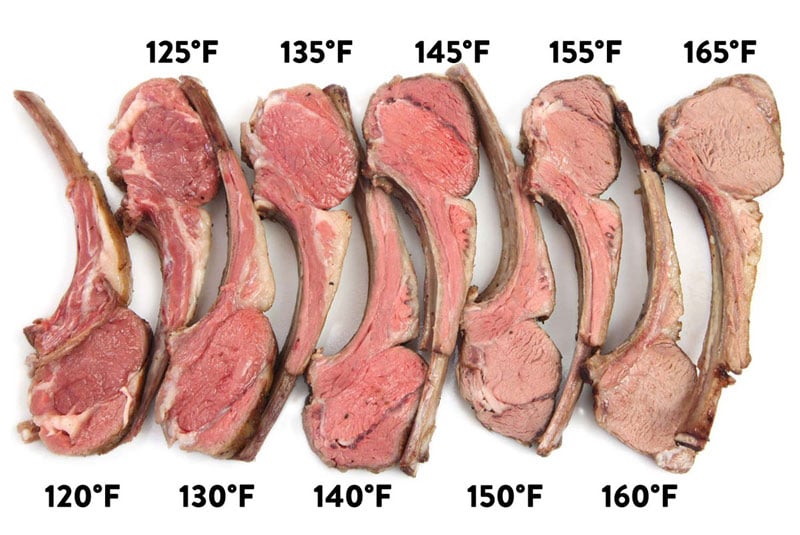
Lamb ribs are best when they are cooked rare to medium rare for maximum tenderness and moistness. For rare lamb, the internal temperature should read 125°F. For medium-rare lamb, the meat should read 135°F. However, be sure to remove the lamb from the oven once it reaches an internal temperature of about 5°F to 10°F below the final desired internal temperature because it will continue to cook for about another 10 minutes.
The lamb is done when it looks a bit pink, juicy, and tender but not bloody.
How to Frenching a Rack of Lamb
Serving a classic rack of lamb entails serving a rack that has been Frenched. You can have your butcher French the rack, or you can do it yourself using the following steps.
What You Will Need:
- Untrimmed rack of lamb
- 12′ lengths of kitchen twine
- A sharp boning knife
Step by step Instructions
- Using a sharp boning knife, slice the lamb along the seam to remove the thick layer of muscle and fat that covers the chops, tugging away the muscle-streaked fat as you go.
- Next, make a cut that expands across the entire length of the fatty top side of the bones on the rib. It doesn’t matter how low or how high you make the cut.
- Position the blade of the knife underneath the cut, and as close to the bone as possible, and remove the thick portion of fat covering the ribs. The layer of fat should detach with ease.
- Holding the rack upright, clean the meat from between the inner parts of the bones using the boning knife.
- To remove any remaining membrane or meat from between the bones, wrap kitchen twine tightly around the bottom part of each bone and then pull the twine towards the tip of the bone, removing any remaining bits of meat or membrane. Season and cook using your favourite recipe.
- So you see, with the right cooking tips and meat thermometer, you too can make the perfect rack of lamb like the best of them. Just remember to check your local butcher’s shop for the freshest cut, and keep the rub at a minimum for maximum flavour. You should also remember to remove the lamb about 5°F to 10°F lower than the final desired internal temperature to avoid it from becoming overcooked.

